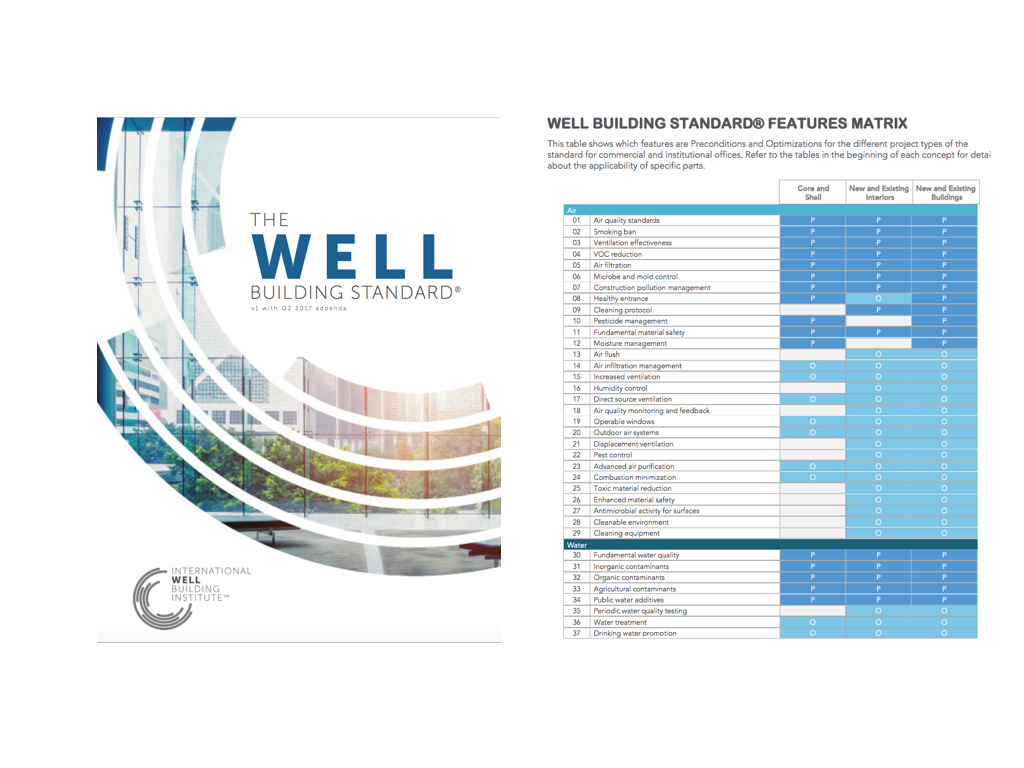Healthy Buildings & Communities
Delos and the Living Future Institute
The ‘healthy buildings’ / ‘healthy communities’ movement is being driven by a number of US organizations such as Delos and the Living Future Institute as a way to promote a positive, healthy and environmentally conscious future to corporations, architects and designers.
Delos raised US$128 million across two equity rounds (2015-2016), partnering with Deepak Chopra on a STAY WELL hotel room concept and tying up with the Clinton Global Initiative. They came out of the blocks racing with a clear mission and a team of New York-based, ex-private equity gurus around the Balinese petrified wood boardroom table.
WELL Building Standard
Their WELL Building Standard has laid out a detailed set of guidelines on how to ensure indoor spaces are designed with health and wellness at their core. It is divided into the following categories: Air, Water, Nourishment, Light, Fitness, Comfort and Mind.
Biophilic design
Biofit’s trademark biophilic design is a central part of the WELL Standard, as are our attention to air quality, VOC reduction, air filtration, cleaning protocol, increased ventilation, circadian lighting design, active design, physical activity spaces, fitness equipment, thermal comfort, olfactory comfort, sound reducing surfaces, thermal comfort, health & wellness awareness, beauty & design.
So we're very much a part of this industry-wide development, we merely apply the principles to a gym environment with an emphasis on finding natural solutions wherever possible.
WELL and LEED
How does the WELL Standard relate to the pre-existing LEED certification for buildings? The two are designed to work side by side although LEED focuses more closely on sustainability and green credentials, i.e. the environment, while WELL advocates wellness features for the users of an indoor space.
So LEED looks at reducing water and electricity use by integrating natural light and ventilation into a building for example with view to minimizing the harm we do to the planet and for the health of those using the building, while WELL is oriented more towards the human element looking at air quality as well as availability of fresh fruit, filtered drinking water, the promotion of stair use, on-site bicycle parking and so on.
Deciding what is right for you
Whether developers will opt to pursue both forms of certification combined or just one of them remains to be seen (estimated costs are around 1-2% of build costs per certification) but the initial signs are that Delos and WELL have won first mover advantage, creating and in many respects owning this new niche while doing immeasurable good in raising awareness amongst corporate office, residential developers, retail brands and healthcare centres of how we can design health into the bricks and mortar around us.
Email us if you'd like to know more about how biofit integrates these same healthy building principles into our gym designs for a doubly healthy user experience!



